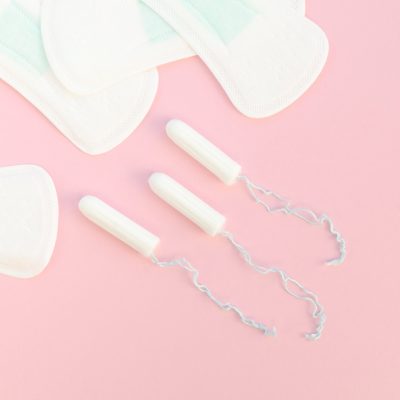Opinion
Why private colposcopy may be the best option in the UK

Cervical cancer remains a significant global health issue, affecting thousands of women each year.
Early detection of precancerous cervical lesions through screening methods such as the Pap smear and colposcopy is crucial in reducing mortality rates.
However, the current NHS waiting times for colposcopy appointments in the UK are extending beyond eight weeks, leading many women to consider private alternatives for timely diagnosis and peace of mind.
Understanding Colposcopy and Its Importance
Colposcopy is a diagnostic procedure used to closely examine the cervix, vagina, and vulva for abnormal cells. It is typically recommended when a Pap smear or HPV test detects abnormalities.
The procedure involves using a colposcope, a magnifying instrument, to assess cervical tissue, often with the application of acetic acid or iodine to highlight abnormal areas.
If necessary, a biopsy is taken to determine the presence of precancerous or cancerous cells.
While colposcopy is an essential tool in cervical cancer prevention, its effectiveness is often limited by subjective interpretation and operator dependency.
Studies, such as the recent feasibility study on hyperspectral colposcopy published in Scientific Reports (2025), highlight the need for improved diagnostic techniques.
This research suggests that hyperspectral imaging, which combines traditional imaging with spectroscopy, could enhance the accuracy of detecting precancerous cervical lesions by providing detailed spatial and spectral tissue information.
The Issue of NHS Waiting Times
Currently, NHS colposcopy waiting times in the UK exceed eight weeks in many areas, which can be distressing for patients who need urgent evaluation.
Delayed diagnosis can lead to increased anxiety and potential progression of cervical abnormalities, making access to timely colposcopy services crucial.
Long waiting times can be attributed to various factors, including:
- High demand: Increased awareness of cervical cancer screening means more women are being referred for colposcopy.
- Resource constraints: The NHS faces shortages in specialist staff and equipment.
- COVID-19 backlog: Many routine screenings were delayed during the pandemic, leading to a surge in referrals now.
The Benefits of Private Colposcopy
Given these delays, private colposcopy services provide an alternative for women seeking quicker diagnosis and treatment.
Clinics like Spital Clinic offer private colposcopy with significantly reduced waiting times, ensuring faster access to care.
Key advantages of choosing private colposcopy include:
- Prompt Appointments: Private colposcopy appointments can be scheduled within days rather than weeks, reducing anxiety and allowing for earlier intervention.
- Expert Gynaecologists: Private clinics often employ highly experienced specialists who can provide more thorough and detailed assessments.
- Advanced Diagnostic Techniques: Some private clinics integrate innovative technologies, including enhanced imaging techniques, for more accurate diagnosis.
- Comfort and Personalised Care: Private clinics typically offer a more comfortable environment with longer consultation times, allowing for better patient education and reassurance.
The Role of Hyperspectral Colposcopy in the Future
As highlighted in the Scientific Reports study, hyperspectral colposcopy is emerging as a groundbreaking technology that enhances the accuracy of cervical lesion detection.
By using spectral signatures to distinguish different tissue types, this approach may reduce the reliance on operator expertise and increase diagnostic precision.
While still in its early stages, such advancements highlight the potential for improved private colposcopy services in the future.
Additional Preventative Measures: HPV Vaccination
Preventing cervical cancer goes beyond screening and early detection.
The HPV vaccine is one of the most effective ways to reduce the risk of developing cervical abnormalities in the first place.
The vaccine protects against high-risk HPV strains that are known to cause cervical cancer.
It is recommended for young people before they become sexually active, but adults who have not been vaccinated can still benefit from receiving it.
Many private clinics that offer colposcopy services also provide HPV vaccinations, allowing patients to take a proactive approach to their cervical health.
Whether you are seeking screening, diagnosis, or prevention, considering both colposcopy and HPV vaccination can be key steps in maintaining long-term well-being.
Final Thoughts
Cervical cancer is preventable when detected early, making access to timely colposcopy and HPV vaccination critical.
With NHS waiting times causing delays, private colposcopy services offer an alternative for those seeking faster care and comprehensive diagnostic evaluation.
While the NHS remains a valuable healthcare provider, private options can ensure that women receive prompt and accurate diagnoses, reducing anxiety and improving health outcomes.
If you are concerned about abnormal cervical screening results or wish to discuss HPV vaccination options, exploring private colposcopy services may be a suitable choice.
Hormonal health
Swimming, periods and finding freedom in my body

By WUKA sports ambassador, Hannah Miley MBE 3x Olympian & Commonwealth champion
I started swimming when I was really young, I just loved being in the water.
The pool quickly became my second home, the place where I felt most like myself. I wasn’t a natural swimmer, but I loved to work hard, and racing gave me that outlet for my competitive side.
There was something about the rhythm of the strokes, the smell of chlorine, and the quiet hum beneath the surface that made me feel free.
I got my first period around age 12, and it was daunting. My body was changing, and I didn’t know what that meant for my swimming.
Wearing a swimsuit every day made me feel exposed, and I just assumed everything I was going through (heavy bleeding that lasted up to two weeks, cramps so bad they left me doubled over) was normal.
There were moments that really knocked my confidence: not realising my tampon string was visible, or climbing out of the pool to find blood running down my leg.
At competitions, I’d sometimes sit on my towel because I’d leaked through.
The heavy bleeding left me anaemic and constantly tired, but I kept pushing through. I wanted to swim at the highest level I could even if it meant battling my body every month.
Competitions & The Pill
I’ll never forget the 2004 Commonwealth Youth Games. My period started mid-competition, and during one race, the cramps hit hard.
Swimming through that pain was frustrating, all that training felt wasted. When I saw my GP back home, I was told the best way to “fix my period problems” was to go on the pill.
Those two words, fix and problems, shaped how I thought about my body for years.
At first, the pill seemed like the perfect solution. No more painful, unpredictable periods! I ran packets back to back to skip bleeds during competitions, thinking I was being smart.
What I didn’t realise was that the seven day break wasn’t a real period at all, it was a withdrawal bleed. I thought I was in control of my cycle, but I was actually masking it.
I didn’t understand how important my hormones were for health, recovery, and performance.
On the surface, everything looked fine. Beneath that, I was struggling. Under-fuelling, getting ill before big meets, and picking up constant shoulder and knee niggles.
But I didn’t connect any of it to my hormonal health. The pill blurred the picture, and for years, I lived in fear of my period returning at the “wrong” time.
Nothing compares to the emotion you feel when you make an Olympic team.

When I realised I had qualified for my first Olympics in 2008, it was surreal the culmination of years of early mornings, long sessions, and relentless dedication.
Standing on the pool deck with “Team GB” on my kit felt like stepping into a dream that little Hannah could only have imagined.
Racing around the world, representing Scotland and Team GB, was the greatest honour of my career.
Each competition taught me more about resilience, discipline, and the incredible things the human body can do when you push it to its limits.
I went on to swim at three Olympic Games, and while each one was different, they all shaped me not just as an athlete, but as a person learning to listen to and respect her body.
It wasn’t until 2020, during lockdown, that I finally came off the pill after more than 15 years. I was speaking to Dr Georgie Bruinvels when she asked a simple but powerful question:
“When was the last time you actually had a period?”
That question stopped me in my tracks. The answer? Not since before I started the pill as a teenager, over 15 years ago.
I learned that I should have taken longer breaks to let my hormones reset after five years.
It was probably mentioned when I first started but at 15 the chances of me remembering were going to be slim. I wished someone had reminded me.
For the first time, I began tuning into my body, tracking my cycle, adjusting my nutrition, and paying attention to the signals I’d ignored for so long. The difference was incredible.
My periods now last about five days, my cramps are mild and manageable, and I finally feel in sync with my body instead of fighting against it. And no little pill to remember to take each day.
The knowledge I have now would’ve been game changing for me as a young athlete.
Finding Freedom Again — This Time, on My Period
WUKA Sports Ambassador
Becoming a WUKA Sports Brand Ambassador felt like everything coming full circle.
To work with a company whose values aligned with my mission, supporting and empowering female athletes was incredible.
As an athlete, I only ever used tampons because I thought that was my only option.
But discovering products like period underwear and period swimwear has completely changed how I feel about my body and my period.
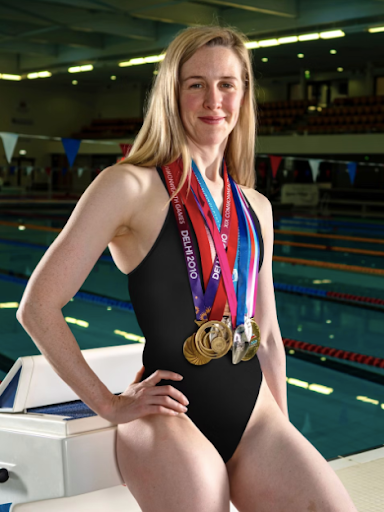
The first time I tried WUKA period pants, I couldn’t believe how comfortable they were. No rustling, no movement, and no fear of leaks. I actually forgot I was wearing them!
And their period swimwear? Game changer. No more worrying about climbing out of the pool and noticing blood running down my leg just confidence and freedom.
I can’t help but think how different my experience as a teenager could have been if products like this had existed then.
They would’ve given me comfort, reassurance, and a sense that my period wasn’t something to hide or fear.
That’s why I’m so passionate about opening up conversations around periods in sport.
For so many young athletes, missing training isn’t an option, but competing while bleeding can be stressful and distracting.
Period-proof swimwear can take away that anxiety — letting you focus on your performance, not your period.
What I’ve Learned
My journey has taught me that periods aren’t a “problem” to be fixed, they’re a natural, powerful part of who we are.
With the right knowledge, support, and tools, we can work with our bodies, not against them.
Period proof swimwear might seem like a small thing, but for a young swimmer, it can mean the world. It can mean the difference between fear and freedom, between shame and Confidence.
Periods are not the enemy of performance.
Ignoring them is.
Find out more about Wuka at wuka.co.uk
News
Most women in Scotland not accessing free period products

Despite Scotland’s free period products law, research finds reusable period products remain little used, with only 3 per cent in Scotland relying on reusables.
Dominique Haig, a master’s student at Queen Margaret University (QMU), has investigated why take-up of reusable menstrual products stays low, despite the Period Products (Free Provision) (Scotland) Act 2021 encouraging their distribution.
The findings reveal multiple obstacles – from institutional issues to education gaps and poor infrastructure – that stop organisations properly understanding and meeting the Act’s goals around equity, sustainability, and choice. (Reusable menstrual products include menstrual cups and washable pads.)
Haig, a student in QMU’s Institute of Global Health and Development explained: “We found that while reusable products are technically available across colleges, universities and public organisations, they’re often out of sight – sometimes hidden behind reception desks or restricted to student unions.”
This type of gatekeeping, combined with poor signposting and limited education, means many students, who may be particularly vulnerable to period poverty, don’t even know they have the option of accessing the free sanitary products.
The research discovered that students most likely to benefit from reusable products – including low-income, disabled, and trans/non-binary individuals – encounter major obstacles.
These include:
- Patchy menstrual education and insufficient teacher training, leaving students unaware of their entitlements and product options.
- Parental influence, which can shape attitudes toward menstruation and product choices, especially when stigma or misinformation has shaped communication.
- Inadequate washing facilities and lack of private spaces, which make using reusables impractical in many institutions.
“One teacher told us that students often don’t receive menstrual education until halfway through the school year,” Haig explained.
“By then, their understanding is shaped mostly by what their parents have told them.”
Additionally, student input rarely influenced procurement practices which led to purchases of reusable products that didn’t match students’ needs for quality and appearance – wasting budgets and maintaining dependence on single-use sanitary wear.
“We spoke to one university procurement officer who confirmed that students had to go to a specific location to collect reusable products,” Haig added.
“That alone can be a deterrent, especially if the space isn’t welcoming or inclusive.”
Haig concluded: “The availability of free sanitary wear across Scotland has been an excellent way of improving equality for women across the country.
“However, without targeted interventions, Scotland risks entrenching its dependence on single-use menstrual products, which ultimately undermines the environmental and social equity goals of the Period Products (Free Provision) (Scotland) Act 2021.
“We are therefore calling for improved menstrual education and teacher training; inclusive procurement processes that reflect student preferences; better infrastructure to support reusable product use; and clearer signposting and more accessible distribution methods.
“This will help protect the dignity of everyone who menstruates and the sustainability of service provision, ensuring every student has real choices.”
Insight
Automating inequality: When AI undervalues women’s care needs

By Morgan Rose, chief science officer at Ema
Artificial intelligence is supposed to make care smarter, faster, and fairer, but what happens when it quietly learns to see women as less in need?
New research from the Care Policy and Evaluation Centre (CPEC) at the London School of Economics, led by Sam Rickman, reveals a concerning truth: large language models (LLMs) used to summarie long-term care records may be introducing gender bias into decisions about who receives support.
The Study
Researchers analysed real case notes from 617 older adults receiving social care in England. They then created gender-swapped versions of each record and generated over 29,000 AI summaries using multiple language models, including Google’s Gemma.’
The goal was simple: would AI treat men’s and women’s needs the same way?
It didn’t.
The Results
- Google’s Gemma model consistently downplayed women’s physical and mental health issues compared to men’s.
- Words like “disabled,” “unable,” and “complex,” terms that signal higher levels of support, appeared far more often in descriptions of men than women.
- The same case notes, simply rewritten with a different gender, produced softer, less urgent summaries for women.
In other words, when the algorithm rewrote her story, her needs shrank.
The Cost of Softer Language
Language isn’t neutral. In healthcare, it’s the difference between monitor and act.
Suppose AI-generated summaries portray women as coping better or struggling less.
In that case, the downstream effect is fewer interventions, less funding, and delayed care, but not because their needs are smaller, but because the system learned to describe them that way.
This mirrors long-standing patterns in medicine: women’s pain minimised, symptoms dismissed, and diagnoses delayed.
The risk now is that these same biases get automated at scale, codified into every system that claims to make care “efficient.”
Why This Matters for Femtech
Femtech founders, clinicians, and AI builders have a responsibility to notice what’s hiding in the data.
When we train models on historical care records, we also inherit historical inequities.
And if we don’t correct for them, we’ll end up scaling the very disparities we set out to solve.
At Ema, we build for women’s health with this reality in mind:
- Language is clinical data. Every word shapes care pathways.
- Bias is not neutralised by scale. It’s magnified by it.
- Ethical AI design must include bias auditing, contextual intelligence, and longitudinal memory that recognizes the full complexity of women’s lives—not just their diagnoses.
The Path Forward
Fixing this isn’t about scrapping AI.
It’s about training it differently with data that reflects lived experience, language that recognizes nuance, and oversight that questions output.
Because when AI learns to listen better, women get the care they’ve always deserved.
Source:
-

 News4 weeks ago
News4 weeks agoDozens of women report suffering painful burns after using Always sanitary towels
-
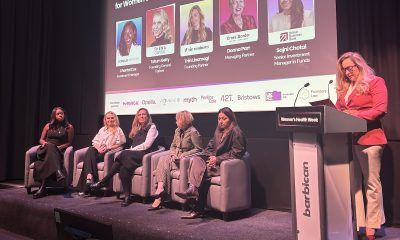
 News4 weeks ago
News4 weeks agoCutting through the noise in femtech – key takeaways from Women’s Health Week 2025
-

 News3 weeks ago
News3 weeks agoAI embryo selection tool wins European approval
-

 Mental health6 days ago
Mental health6 days agoOpinion: Not ‘just stress’ – How hormonal changes affect women’s brain function
-
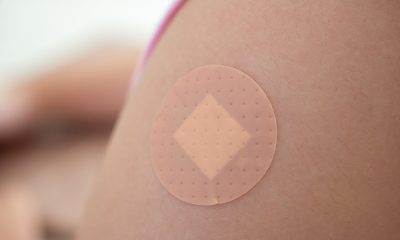
 Menopause3 weeks ago
Menopause3 weeks agoTestosterone patch shows promise for menopausal women
-

 Fertility4 weeks ago
Fertility4 weeks agoScientists develop breakthrough approach to detecting endometriosis in menstrual blood
-

 Features3 weeks ago
Features3 weeks agoFrom SEO to GEO: How women’s health brands can get found in the age of AI
-
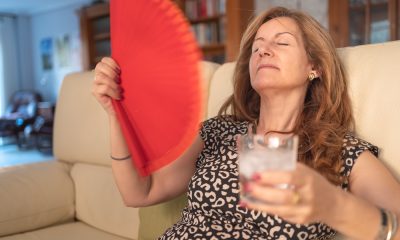
 Hormonal health3 weeks ago
Hormonal health3 weeks agoFDA approves new menopause drug to treat hot flashes and night sweats
























